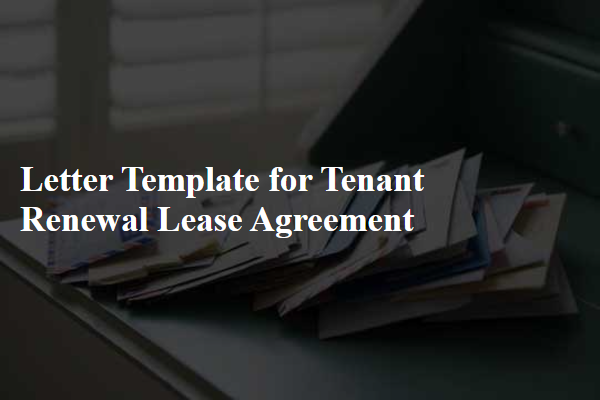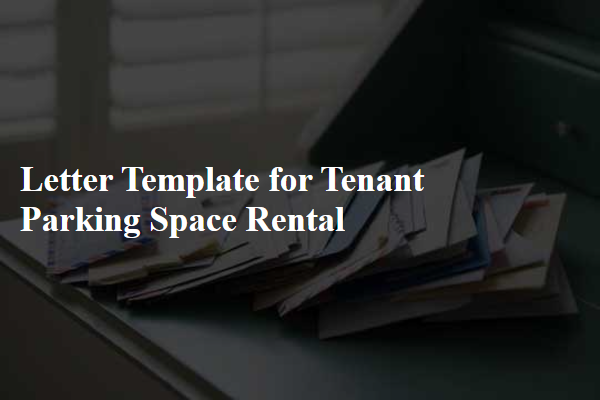Are you nearing the end of your lease and considering whether to renew? It's important to understand your options and what a renewal could mean for your living situation. In this article, we'll break down the essentials of a tenant renewal lease agreement, ensuring you feel informed and confident in your decision-making process. So, let's dive in and see what you need to know!

Contact Information
Contact information for tenant lease agreements is critical for communication and documentation. Essential elements include tenant names (at least one primary contact), property address (including unit number for multi-unit buildings), phone numbers (mobile and/or landline), and email addresses (for electronic correspondence). Landlord or property management company contact details should also be clearly listed, including names, phone numbers, and email addresses. Additional notes may include emergency contact information, maintenance request procedures, and preferred communication methods to facilitate smooth interactions throughout the lease period. Clear and accurate contact information fosters transparency and efficiency in tenant-landlord relationships.
Lease Terms and Duration
A lease agreement renewal typically includes important details such as the duration of the lease (often 12 months, but may vary), rental amount (including any changes), and specific terms regarding maintenance responsibilities and other tenant obligations. For instance, the duration could specify the time frame from January 1, 2024, to December 31, 2024. The rental amount may change from $1,500 to $1,600 per month based on market adjustments. Additional clauses may outline pet policies (e.g., no pets allowed), maintenance procedures for common areas (including response times for repairs), and policies on subleasing (approval required from the landlord). This essential document formalizes the agreement between the landlord and tenant, ensuring understanding of shared responsibilities and minimizing disputes.
Rent Payment Details
The tenant lease agreement renewal includes critical rent payment details that outline the financial obligations of the tenant. The monthly rent amount, specified as $1,500, reflects current market conditions for residential properties in areas like Midtown Manhattan, where demand is high. Payment due dates, typically established as the first of each month, ensure timely transactions. Preferred payment methods, such as direct bank transfers or electronic payment platforms like PayPal, enhance convenience and record-keeping. Late fees, often 5% after a five-day grace period, are enforced to encourage prompt payments, safeguarding the landlord's interests and maintaining cash flow. Additionally, security deposit details and conditions for its return upon lease termination are outlined, providing clarity and confidence for both tenant and landlord.
Renewal Conditions and Amendments
Renewing a lease agreement requires careful consideration of various conditions and amendments to ensure clarity and consent from both parties involved. The specified renewal conditions may include the duration of the renewed lease, potential adjustments to rent prices based on local market rates, and responsibilities related to maintenance and repairs. Amendments might address changes in occupancy, such as the addition or removal of tenants, and specific rules regarding pets or smoking policies within the rental property. Furthermore, both the landlord, typically represented by an individual or property management company, and the tenant, who resides at a designated address, should agree on methods for communicating any concerns or notices related to the lease. Regular inspection schedules and protocols for addressing breaches of lease terms may also be outlined, ensuring a clear understanding of all responsibilities. Detailed attention to these elements fosters a positive landlord-tenant relationship and promotes transparency throughout the lease renewal process.
Signature and Date
Renewal lease agreements for tenants require clear documentation, including signature sections and date fields. The signature area should include both tenant and landlord lines, ensuring their names are printed above each signature line for clarity. The date field next to the signatures provides a timestamp for when the agreement was finalized. This section is crucial for legal records and to facilitate any future disputes regarding the lease terms. In standard lease agreements, the renewal term should also be specified, alongside details such as rent amount and payment due dates. Proper completion of this section solidifies the mutual consent of both parties.
















Comments